How To Season A Cast Iron Skillet
As an Amazon Associate I earn from qualifying purchases.
Today I am thrilled to bring you a guest blogger who will be speaking on a topic we all need to know about – how to season a cast iron skillet the right way. As a Mechanical Design Engineer, Richard Hall may seem an unlikely choice for a food blogger, but his heritage, common-sense know-how, and generosity in sharing his knowledge with us make him the perfect choice for a topic of the utmost importance to any Southern cook! Thank you, Rich!
Hey all,
Since Southern Plate has all these great Southern recipes, I thought it might be useful to share how to season a cast iron skillet or other types of cast iron cookware. You may ask, what is seasoning and why do I need to season my cast iron skillet? The answer is very simple. Seasoning makes it non-stick like all the new miracle cookware. And the why is you can buy and maintain a non-stick skillet with nothing more than vegetable oil and shortening and common sense and it will never wear out. The cast iron skillet can be used to cook on the stovetop, the oven, or the grill. A good iron skillet can be passed down as an heirloom if taken care of properly.
What You Need to Season a Cast Iron Skillet
It is very simple to do albeit a little messy. What you will need is:
- The cast iron skillet
- A box of vegetable shortening, which can be purchased in your favorite supermarket for less than $2.
- A roll of heavy paper towels
- Your oven
Just a quick note, the seasoning of a new skillet and the re-seasoning of an are the same except for the first step. So let’s get started.
How to Season a Cast Iron Skillet
Wash new skillets before seasoning
Make sure your new has been washed in hot water and mild dish soap. This will remove the factory anti-rust coating. For re-seasoning an existing skillet, just make sure to wipe the entire surface with hot water and a clean washcloth or a paper towel (sponges need not apply). Dry the skillet by heating it on the cooktop then let it rest and cool. Preheat your oven to 200 degrees.
Season with vegetable shortening or oil
Fold the paper towel into a fourth and place a dollop of vegetable shortening in the skillet. The size is not important, but for a 10” skillet, use about 1/4 of a cup. More can be added as required to cover.
Instead of lard or vegetable shortening, use any kind of vegetable oil. I recommend refined coconut oil as it has a higher smoke point.
Take the paper towel and coat the interior, the exterior down to the bottom edge, and the handle liberally.
I don’t coat the very bottom of the skillet, as any cooking surface that it touches will make smoke and just burn off the shortening or oil.
Place the skillet in the oven
Once you have the skillet coated, place it in the oven (at 200 degrees) and set a timer for 3 hours. This low temp will open the cast iron pores up and allow the vegetable shortening to penetrate as it liquefies.
Remove from the oven
After the time is up, cut off the oven and let the skillet cool. Once it is cool enough to touch, wipe it down with another paper towel to remove any or vegetable shortening and just leave a on the surfaces.
In another hour or so, wipe it down again.
After this final wipe, the skillet will continue to cool and in about an hour will look like the last picture.
Using Your Cast Iron Skillet
Now you are ready to use the skillet. For the first couple of uses, cook something greasy like bacon or sausage. This will help heat cycle and re-coat the interior surface which will make the non-stick coating better. Also, be aware that it is going to smoke for the first couple of uses as it heat cycles and burns off the water trapped in the pores and the excess vegetable shortening.
To maintain the skillet you will need to wipe the interior every couple of months with bacon grease during a heat cycle or cook something greasy and re-season about every 2 years following the process above.
Also, don’t let food sit in the skillet as this will remove the seasoning.
After each use, wash the skillet out using a very mild soap solution and warm water. NEVER wash in the dishwasher. The reason for using mild soap solution is to keep from removing the seasoning layer.
One other note that I personally do is the drying step after a wash. I will turn the cooktop on to high heat and place the wet skillet on it for about a minute. This will heat the skillet up enough to dry the water and heat cycle the pores. This keeps everything as it should be.
—
If you choose, you can render your own lard from bacon drippings. If you own a microwave bacon-cooking tray it is very easy. Just cook some bacon and let the drippings cool either in the tray or pour them into a bowl or shallow dish while still hot. Once it has cooled and congealed, you can use it just like the vegetable shortening as described above. This is perfect for the occasional re-seasoning of your skillet.
I hope this has been helpful and if you have any questions just direct them to Southernplate.com and I’m sure Christy can find me to get the answers.
See you ’round,
Rich
Before you go, check out these great cast iron recipes:
Southern Cubed Steak and Milk Gravy
Skillet Carrot Cake from Southern Cast Iron

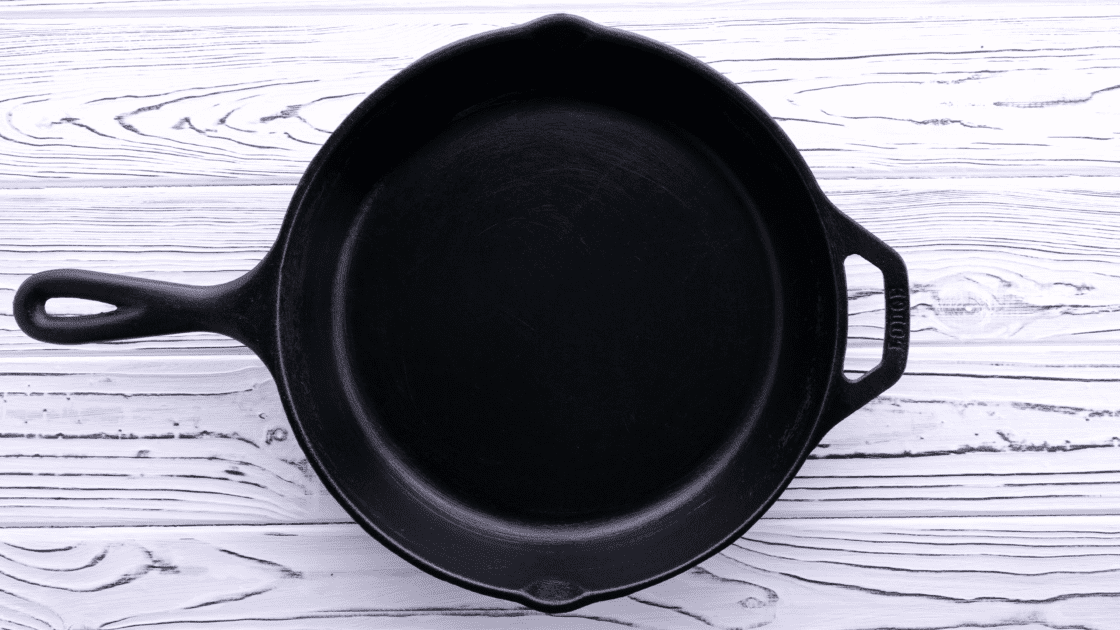
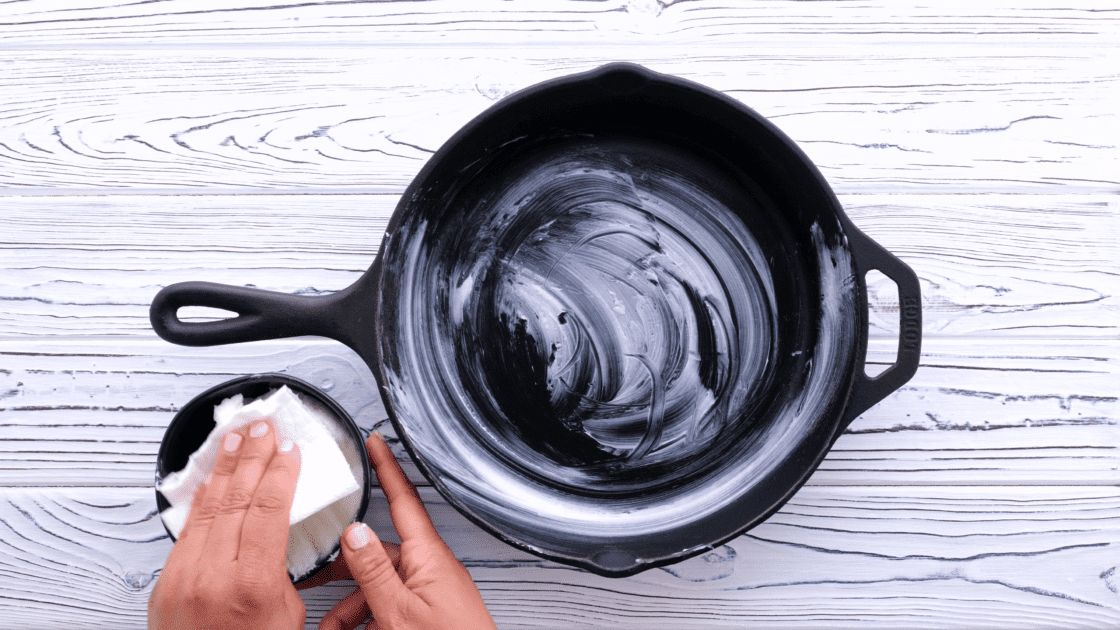
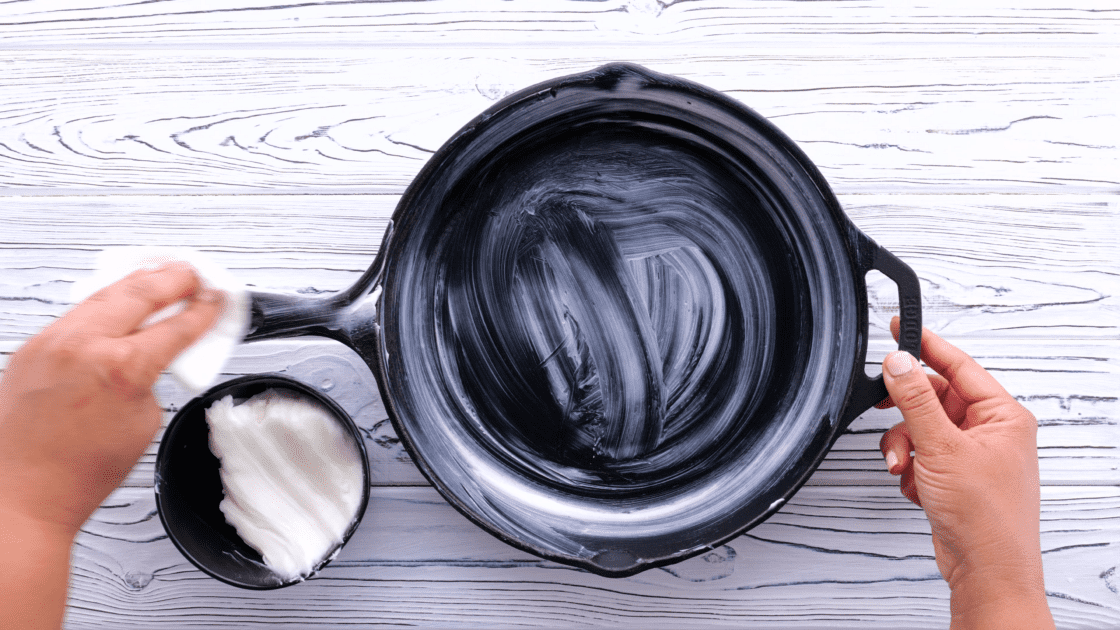
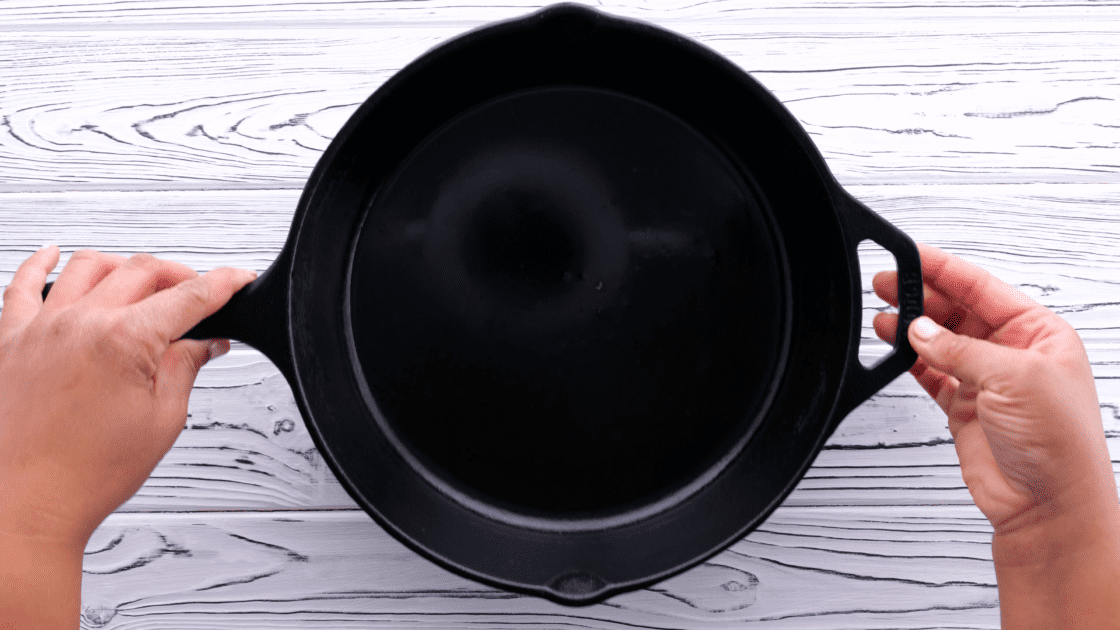

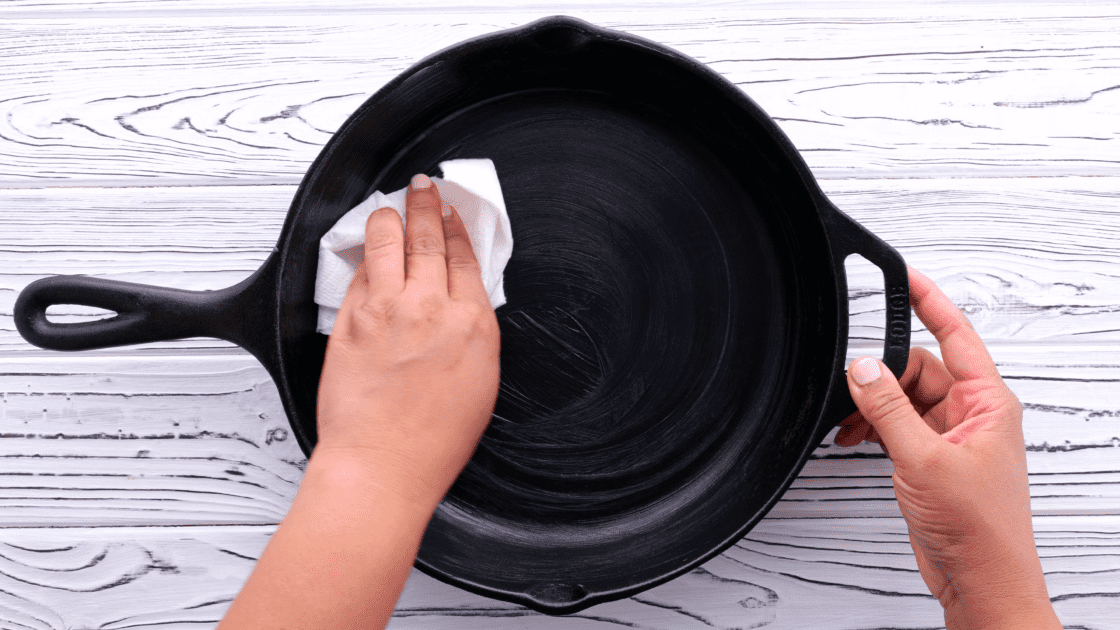
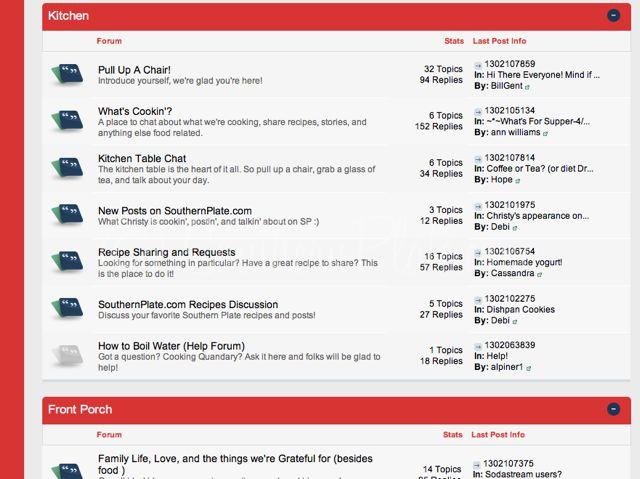
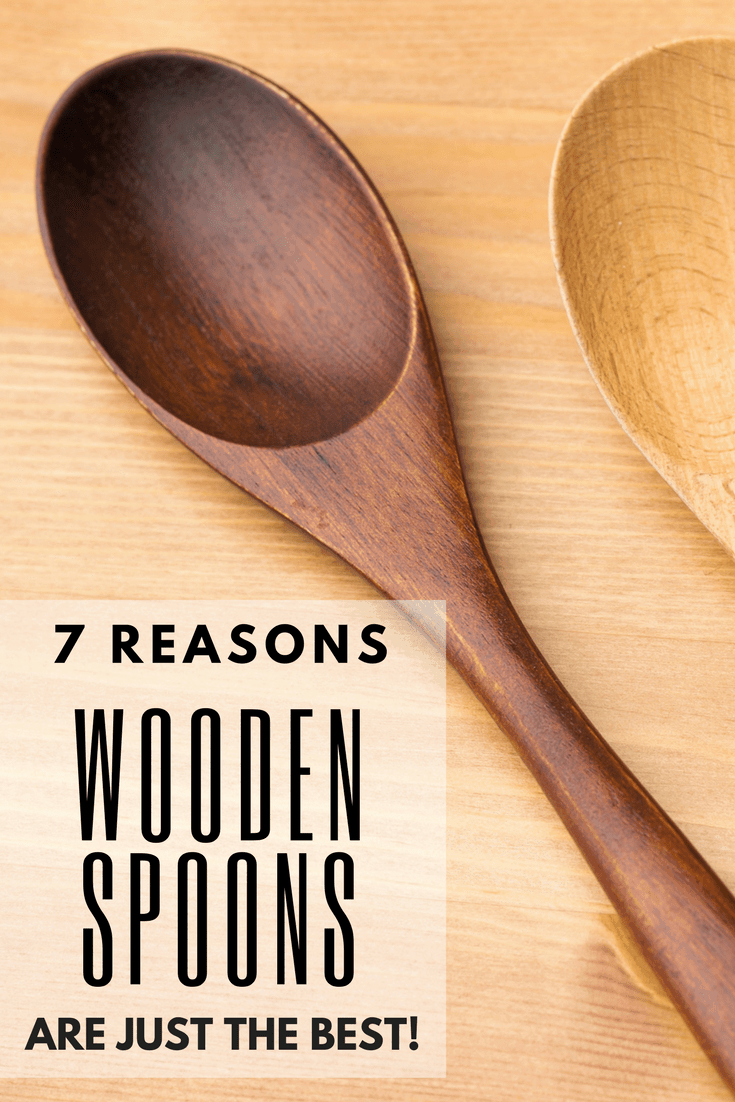
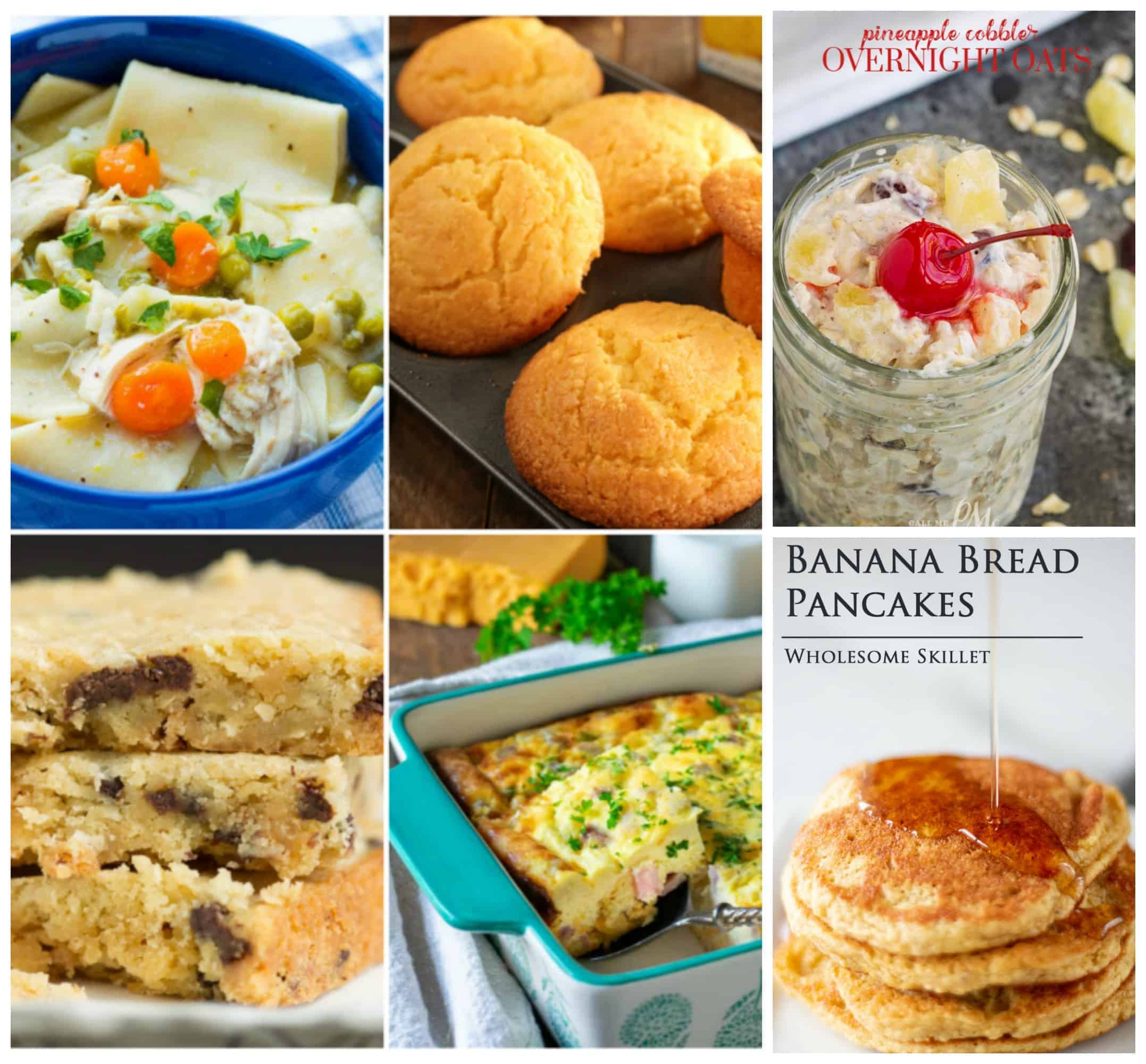
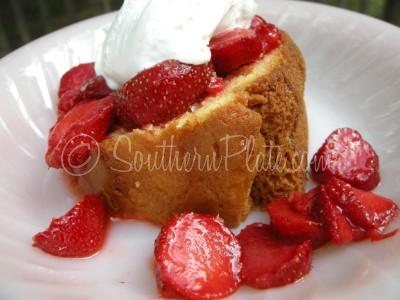
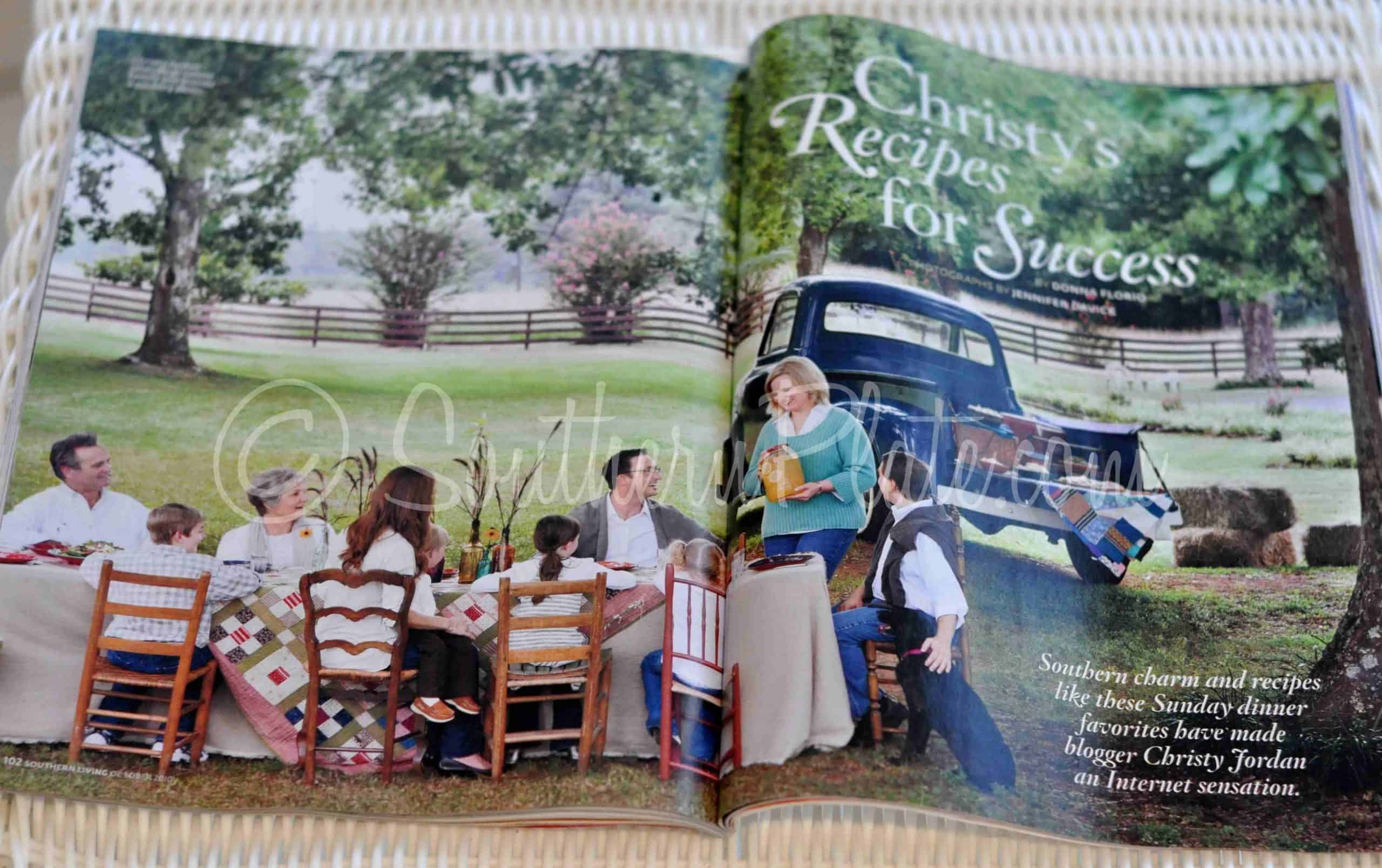

Every time we cook scrambled eggs in our cast iron skillet they stick something terrible, then we have to scrub it hard to get it clean again then start the whole seasoning process over. Should we stop using the cast iron to cook eggs? Are there some foods you don’t want to use the cast iron to cook? Is there a better method to using cast iron for eggs like do you have to heat the pan up good beforehand or somehting?? What about cooking soups or stews? I’m a newbie at this and need all the help I can get on this issue.
Am in the process of seasoning several vintage cast iron skillets in the oven today. We have a brand new cast iron dutch oven that has not been seasoned. I coated it with lard this morning and cooked bacon and onions in the process of making baked beans on the grill. Soaked the beans overnight and thought things were going well. The beans were cooking according to the recipe @300 for 2.5 hours. Just checked the pot……they are burnt and stuck in a big mess to the bottom of the pot…….AUGHHHHHHHH. Ruined….. 🙁 Now, how do I clean the cast iron dutch oven…..and prepare it for another use. I’m so sad right now……..your thoughts and help will be very much appreciated. (I’m sure the coleslaw I’ve made from your cookbook recipe will turn out just fine!!)
my boyfriend trying to be helpful cleaned my grandmother’s skillet with an sos pad. I wanted to cry. Is it ruined? Can I reseason it and still use it?
Don’t fret, Hilary… just re-season it and you’ll be good to go. Better yet, make the boyfriend do it, so he learns his lesson.
My wife, Linda and I have three iron cast skillets. I have gone back to using them as the non-stick skillets get worn down over time. I am working on seasoning the last of the three skillets and hope to have less problems with food sticking to these pans. Thanks for your helpful points.
I reseasoned the skillet, and my Dixie Cornbread slid out just perfect!!! Thanks Christy
Yaaaay, Linda! Dixie Cornbread for everyone!
I just bought a “pre-seasoned cast iron skillet at Walmart, to make cornbread in. After it was done, I turned the skillet upside down, fully expecting my cornbread to slide right out, and the whole top of it was stuck to the pan!!! This has happened twice more. Please help!!! I love cornbread in an iron skillet.
Even though it says preseasoned, I recommend seasoning it yourself once home. This will help tremendously! Be sure you grease it well before cooking each time also. The longer you have it, the more “nonstick” it will become. 😉
Thanks so much!!!
What about the coating they sometimes use on iron skillets? Not good — it tends to
pill up when scrubbing. Intended to attract non stick fans, I guess. I don’t like.